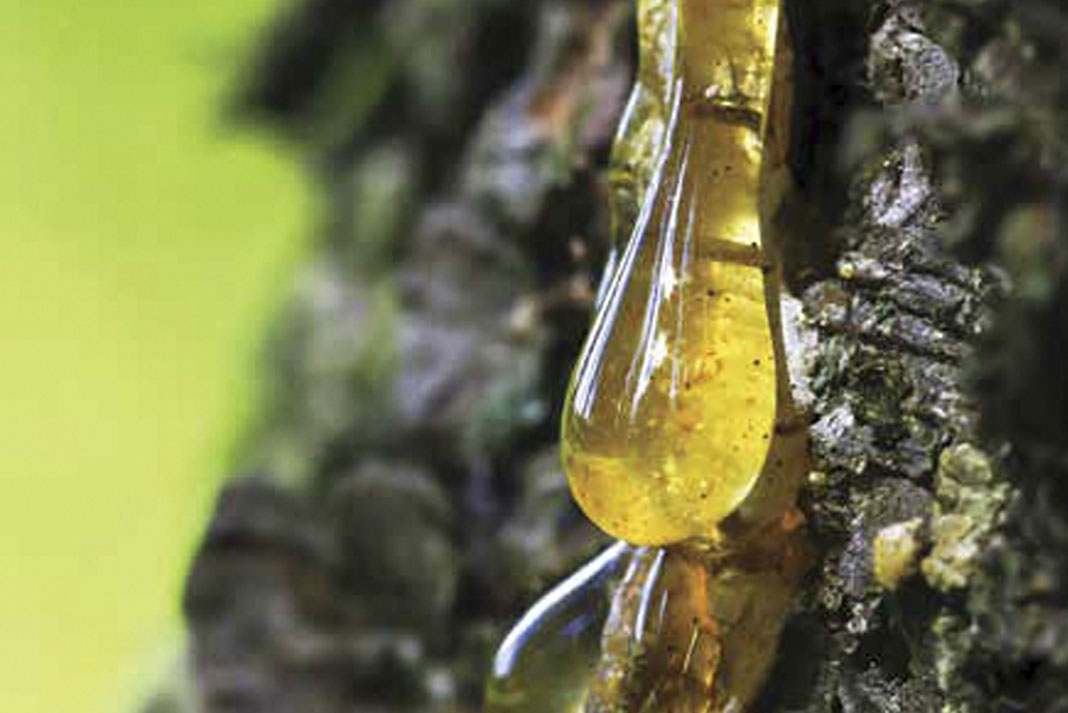Despite the name, pine gum or resin isn’t specific to pine trees—it can come from pines, cedars, spruce, firs, junipers and most other coniferous trees. The sticky substance has long been used in various forms by artisans and industrial manufacturers as well as backcountry campers, survivalists and other practitioners of bushcraft.
Here are some handy uses for pine gum and resin to remember next time you need a hand from nature’s glue stick.
7 uses for pine gum
1) Protecting coniferous trees
Airborne diseases, insects and animals are blocked by resin’s defense mechanisms as it secretes from punctured areas on the tree. After leaving the tree, turpentine oils evaporate quickly and the resin hardens into a scab that can be harvested and reheated to soften the pine gum into a pliable paste.
2) Preserving dinosaur DNA
The scabbing process is responsible for preserving priceless fossils of plant and animal specimens from long before our time. Pine gum also played a crucial role in kickstarting the Jurassic Park movie series. Preserved chunks of amber have led to groundbreaking finds such as: a carnivorous plant, dinosaur feathers that still have their color and even a Caribbean Anolis lizard that’s 15-20 million years old.
3) Treating musical instruments
Rosin, the distilled form of resin, is formally known as colophon. Colophon is used in everything from bandages to dental products. String instruments such as violins require rosin to coat their bow. Referred to in the Charlie Daniels song “The Devil Went Down to Georgia“, as the devil prepares to duel with Johnny, “fire flew from his finger as he rosined up his bow.”
4) Varnishing furniture
Most recently, some unfortunate souls felt the burn when they experienced an eruption of localized buttocks reactions from ash tree toilet seats that were coated in resin-based varnish. Those who fell victim quickly removed their fiery thrones.
5) Pulp and paper manufacturing
Wide distribution is likely to blame for it being rated one of the most problematic allergens in North America. Commonly used in paper printing, adhesives and varnishes, it’s a tough natural material to avoid.

6) DIY glue and waterproofing
Survivalists use all forms of tree gums for waterproofing boot seams, fixing leaky canoes and damaged tents by forming backcountry hot glue sticks. Because pine gum is highly flammable, it can even be used as a fire starter or candle torches.
7) Topical wound treatment
Resin straight from the tree can be applied to wounds to stop bleeding and work as an antibacterial salve and poultices.



